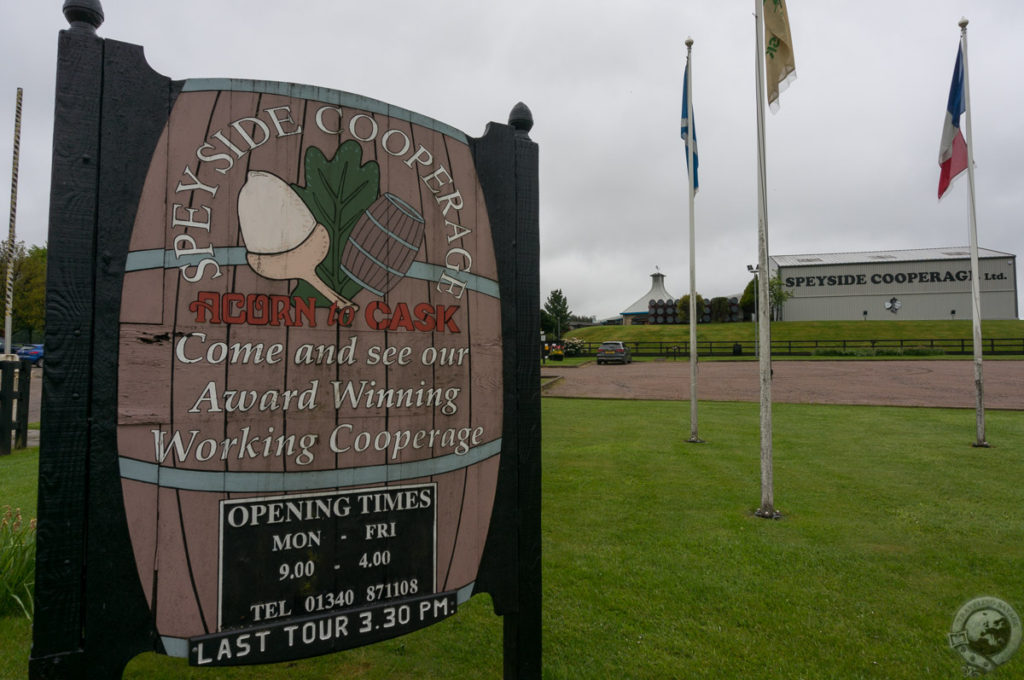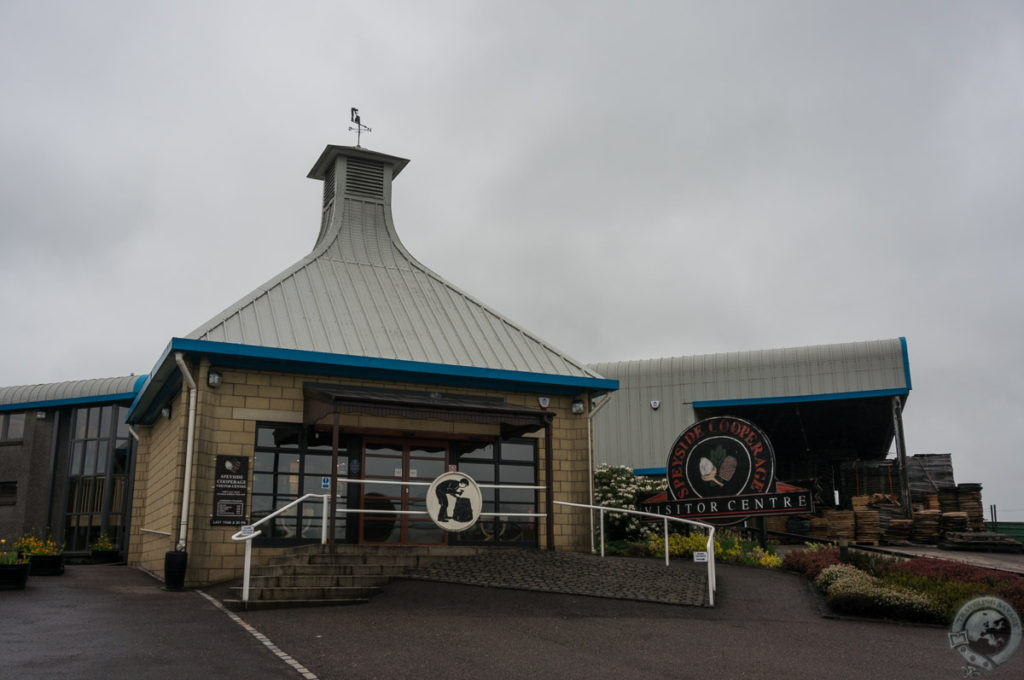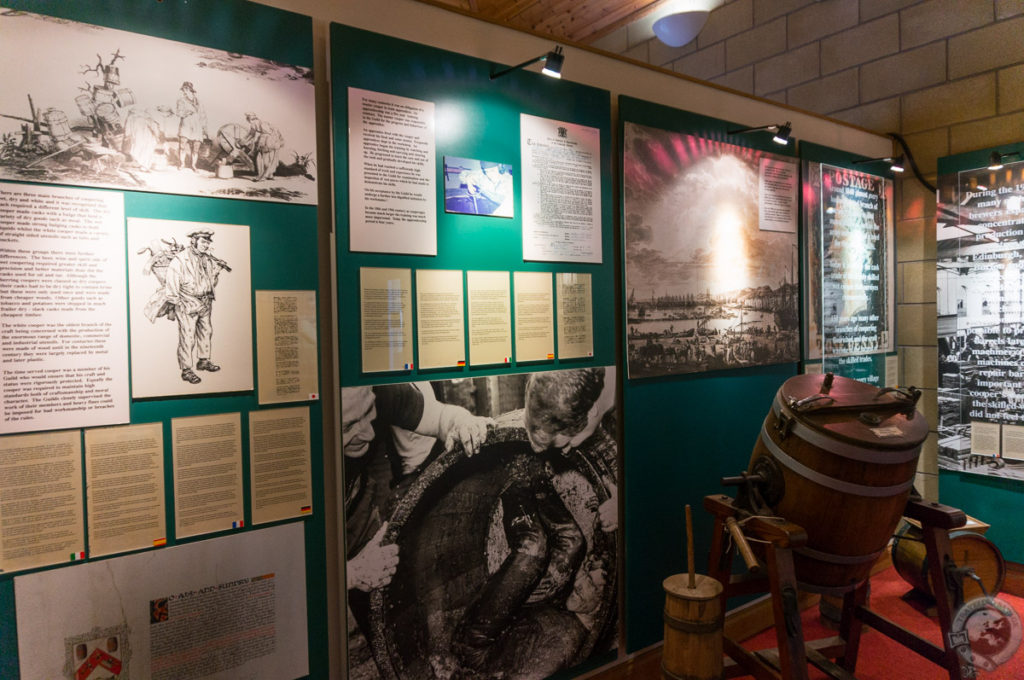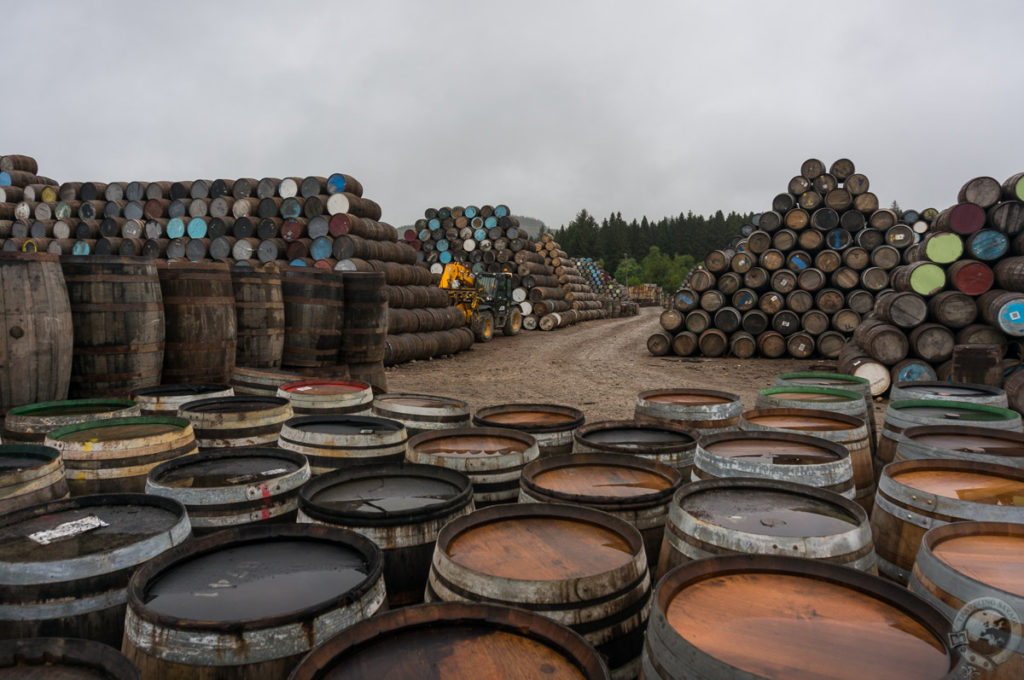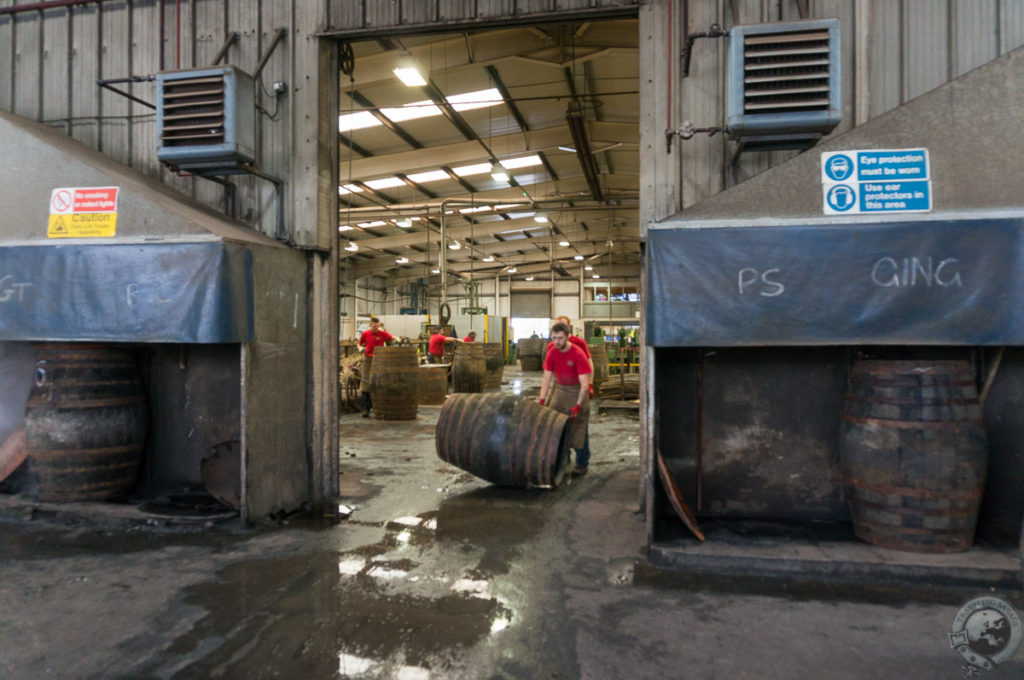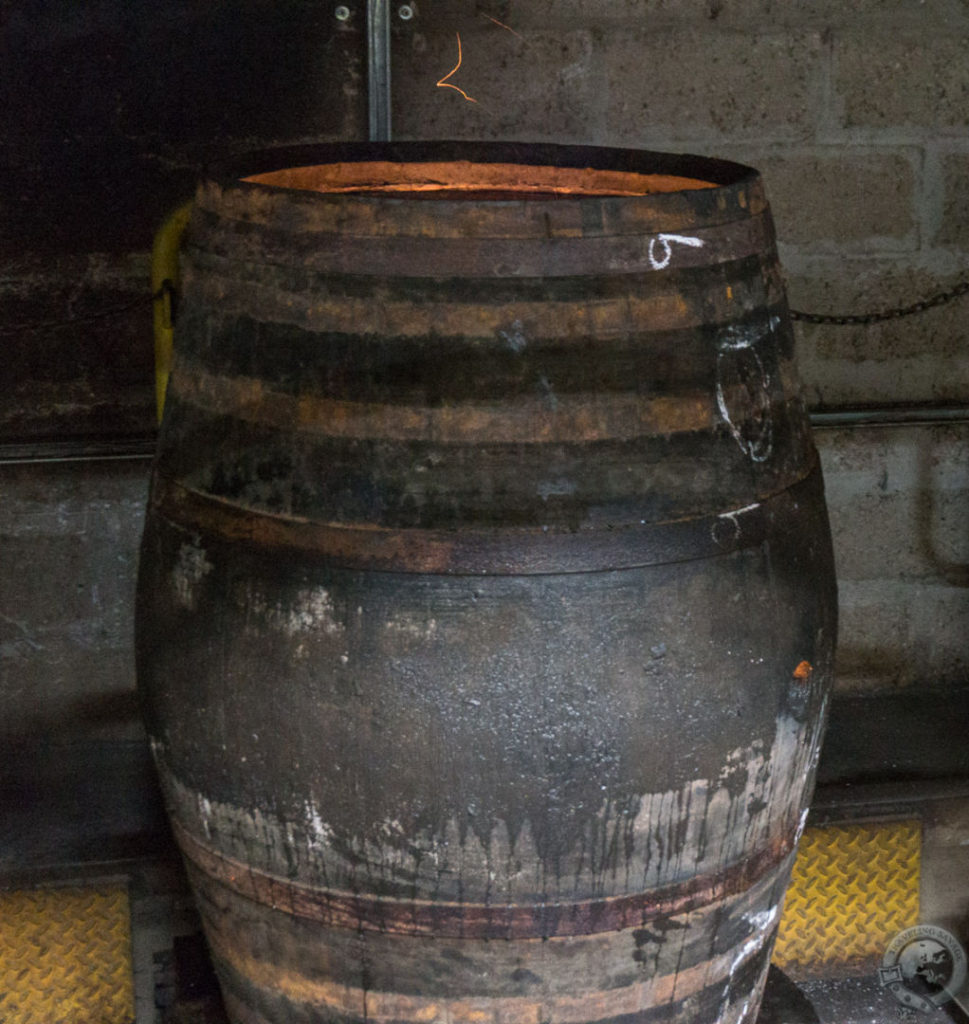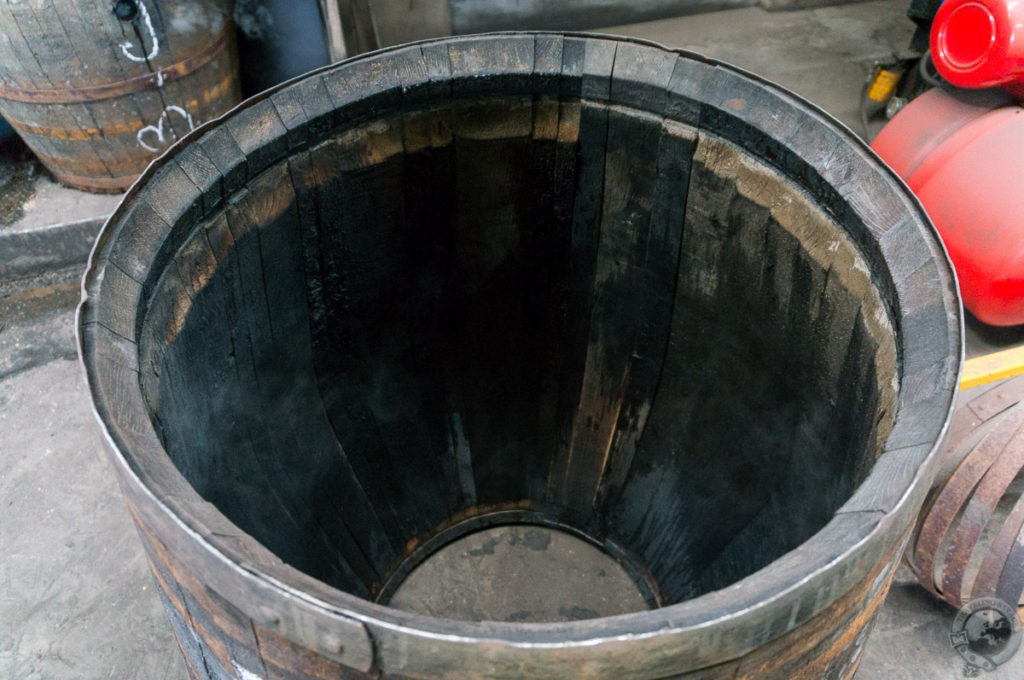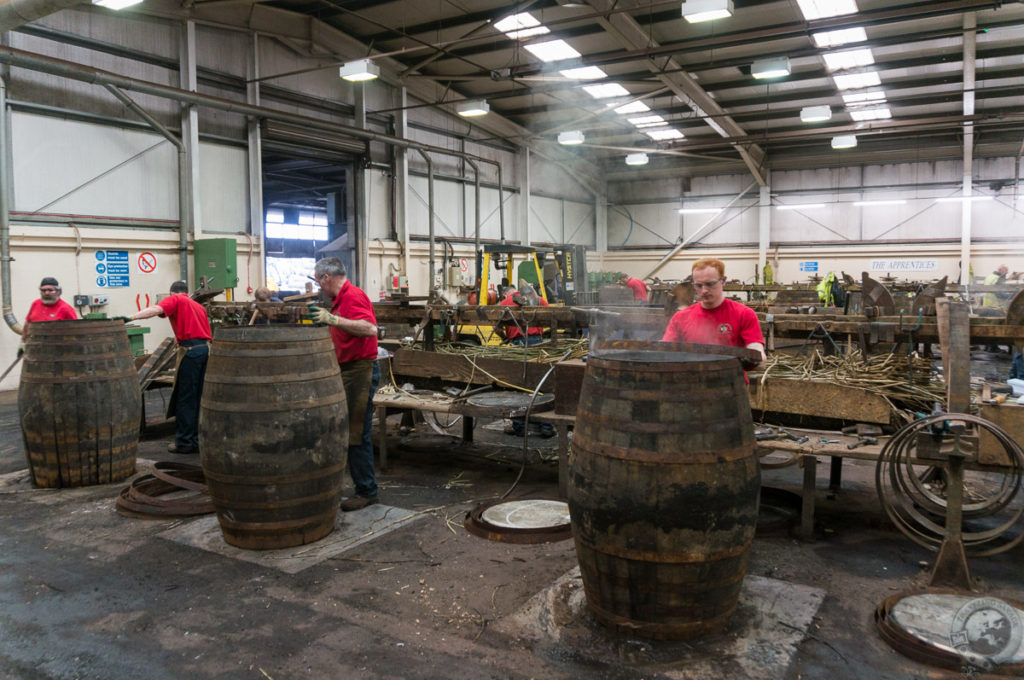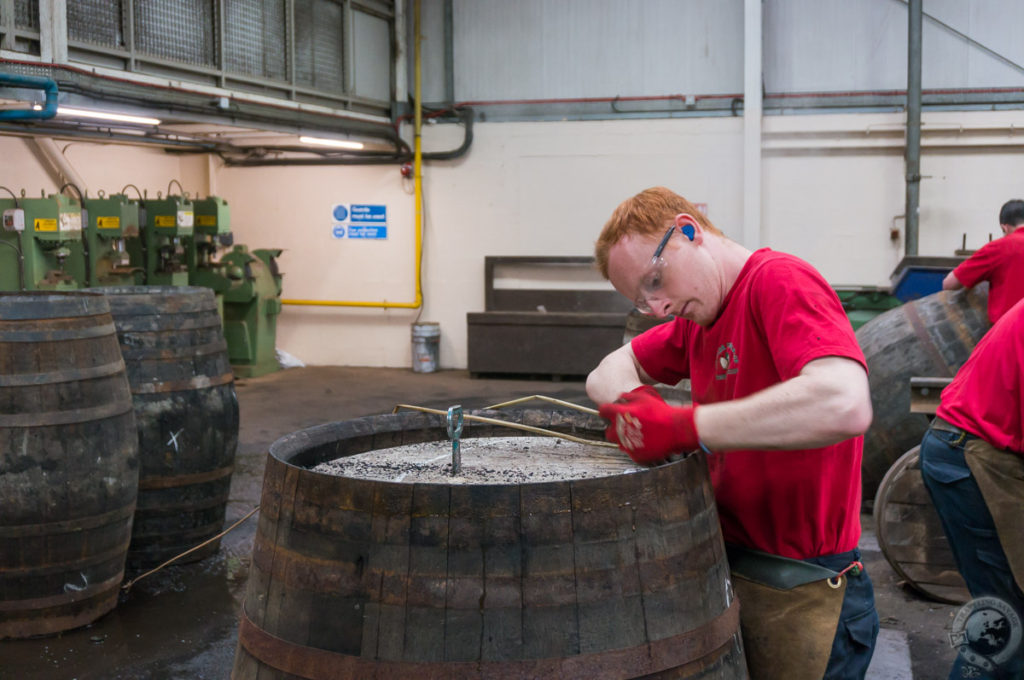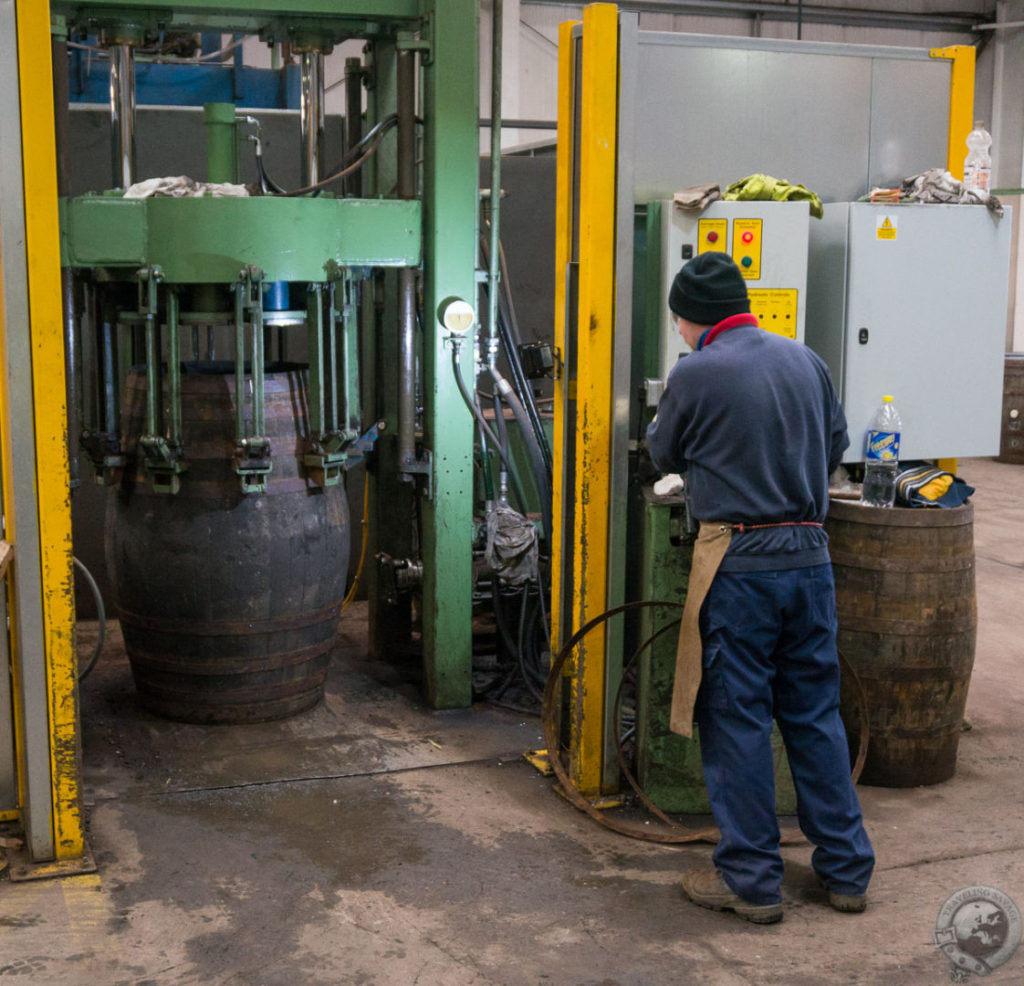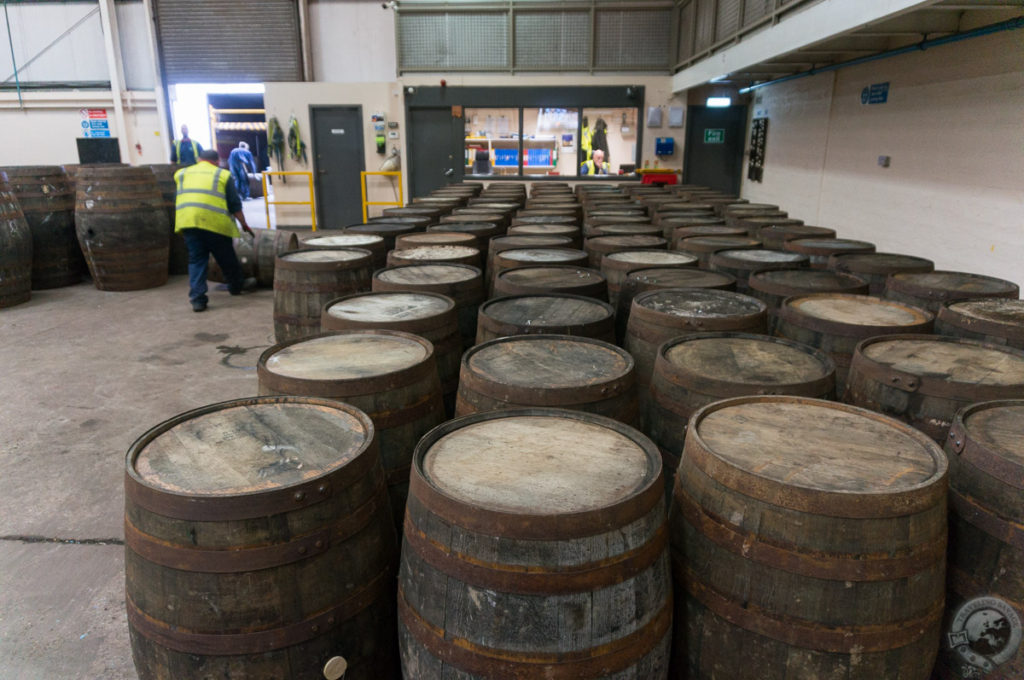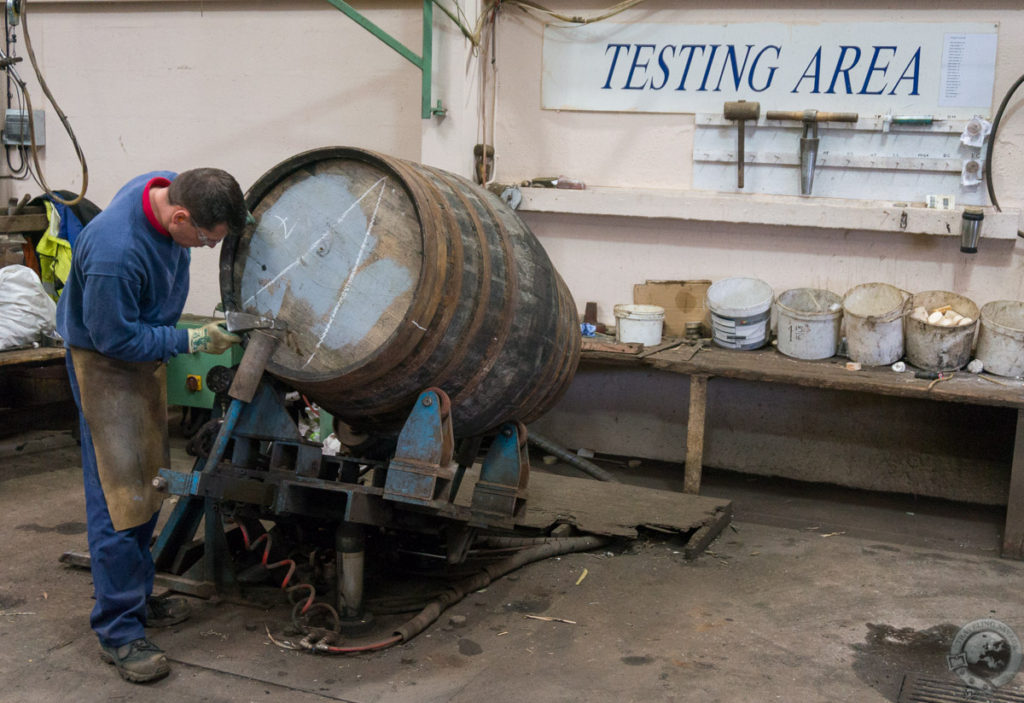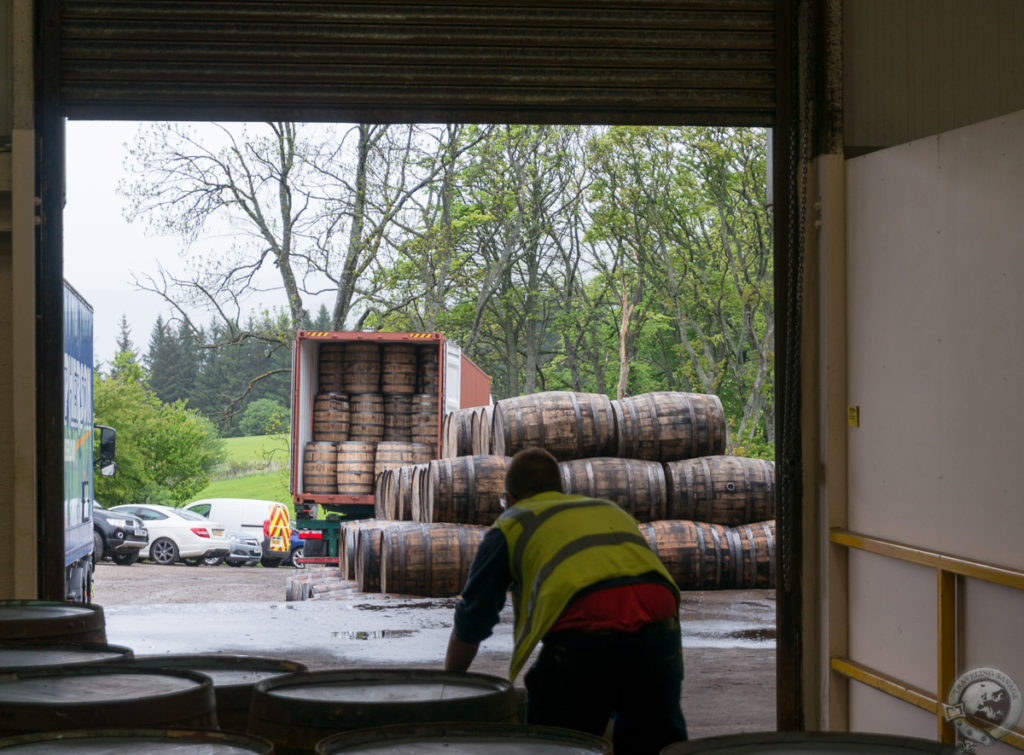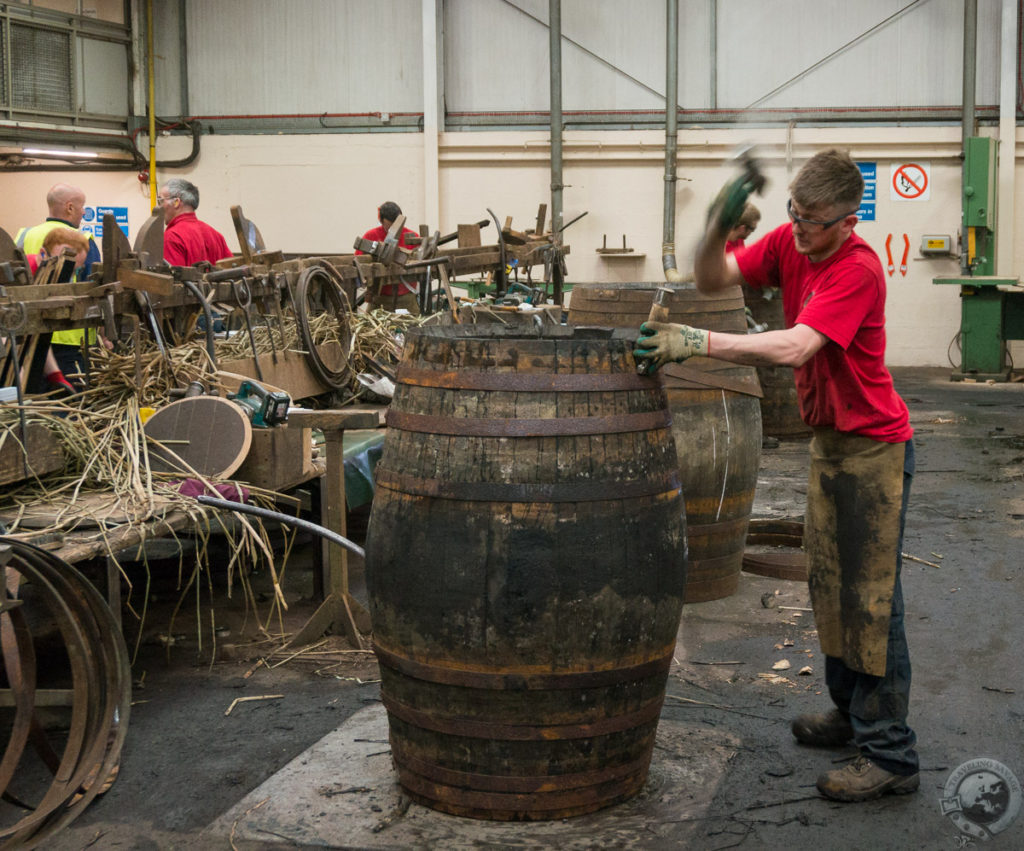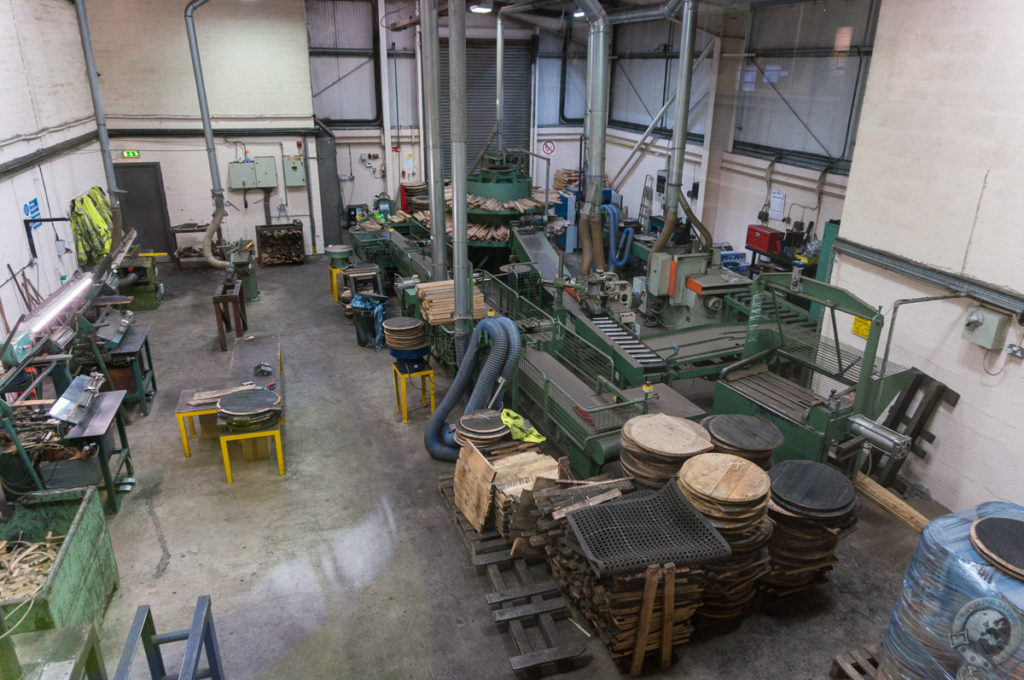Scotch whisky is big business. Demand for single and blended malts is sweeping the world like never before, and the distilleries creating Scotland’s golden elixir have created their own micro-tourism industry within Scotland. A distillery tour is a distinct pleasure mixing education with sensual satisfaction, and it’s not unusual to come away from such an experience with a mind for digging deeper into the process. Any distillery will tell you roughly 70% of whisky’s flavor comes from the barrel in which it’s aged, so a cooperage like the Speyside Cooperage makes for a logical next step for the malt-curious.
The Speyside Cooperage lies in the heart of Scotland’s magnificent Speyside region, just a stone’s throw from convivial, tiny Craigellachie. You can’t ask for a more accessible location in amongst the region’s 50+ distilleries, and, this being the only working cooperage with a visitor’s centre in Britain, that’s good because it’s the only choice you’ve got (though I’d be remiss if I didn’t mention that Balvenie has a small cooperage on site where you can see much of the cooper’s art).
The Speyside Cooperage’s visitor’s centre is compromised of a small exhibit with time-worn displays about the history of coopering and its context within Scotland. The idea is to wander the exhibit or peruse the adjoining gift shop and coffee shop prior to the start of your tour.
A short video about the importance of coopering and barrels kicks off the tour, and the interesting bits come fast and quick thereafter. Small lanes and hallways with viewing glass run around and through the cooperage, which was either purpose-built for visitors or seriously renovated in the past. Our group of about 20 people dodged coopers rolling barrels into the workshop so we could get a look at the cooperage’s backlot: A veritable mountain range of stacked barrels, their multi-colored ends facing out, filled the horizon. These barrels have come from around the world to be graced by the capable hands of the Speyside Cooperage’s coopers.
Barrels used for aging wine, beer, and spirits come in all shapes and sizes, from quarter casks to hogsheads, butts, pipes, and everything between and beyond. But a barrel is always* made from oak wood because oak provides a tight seal, allows spirits to breathe, and imparts beautiful flavors. Historically, this oak has either been European oak, largely from France, or white oak from the Ozarks in the USA. French oak has typically been used to age red wines and fortified wines like Sherry and Port before being shipped to Scotland for use aging whisky while white oak has almost always been used to age Bourbon first. Other oaks like Serbian black oak and Japanese Mizunara oak are coming into use as resources grow scarce.
What this means is that the coopers of the Speyside Cooperage generally aren’t creating new barrels from raw materials. Instead, they are repairing and rejuvenating existing barrels and making them whisky-ready. Some whisky is aged in new, virgin oak barrels, but in Scotland’s damp, cool climate, where barrel respiration is slow and whisky needs to mature for many years, virgin oak barrels can release too much flavor into the spirit and overpower its intrinsic character. Barrels that have been used previously have had some of the wood’s flavinoids leeched out. What might be a detriment in the wine and Bourbon industries is a boon in Scotland where weakened wood flavor meshes perfectly with long maturations. Plus, who doesn’t love a little of the previous barrel’s contents influencing the whisky?
* Some mad scientists and entrepreneurs like Tony at Strathearn are experimenting with other woods like Cherry, Pear, and Chestnut for aging whisky.
One of the most amazing things about coopering these barrels is that they’re assembled without nails, glue, or any adhesive. All that keeps them together is precise fit and metal hoops. You might assume such precision take loads of time – so would I – but coopers don’t have time. They’re paid by the barrel, so the work floor at the Speyside Cooperage is a flurry of hammering, hydraulic equipment, rolling barrels, and iron focus and determination. It’s a marvelous and cacophonous spectacle.
The Speyside Cooperage may look like an industrial installation with some bolted-on tourist trappings, but it’s also a gallery with art on display and in the moment. This truly is the crucible of flavor, the vanguard of pleasure, and without the cooper’s ancient art whisky would be a shadow of itself.
Coopering is a lucrative but dying art. If you can swing a hammer and have a bend toward craftsmanship, please consider this field. The world needs more coopers.
A visit to the Speyside Cooperage is a unique experience. It feels like a privilege (and somewhat of an intrusion) to watch these people work as they methodically meld skill with oak to manifest the flavor of tomorrow’s drams.
Disclosure: The Speyside Cooperage provided me with a complimentary visit. All thoughts and opinions expressed here, as always, are my own.

